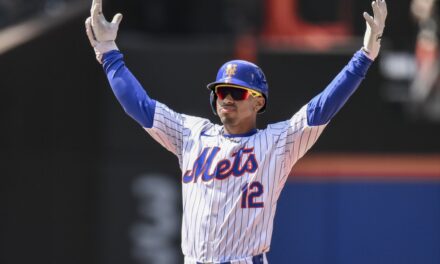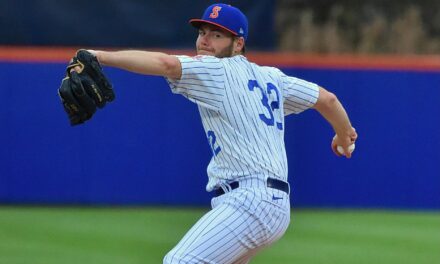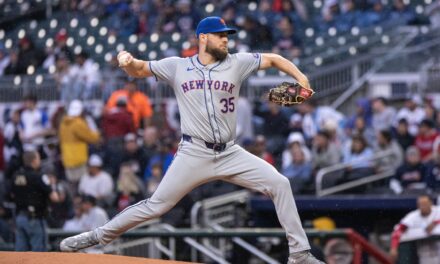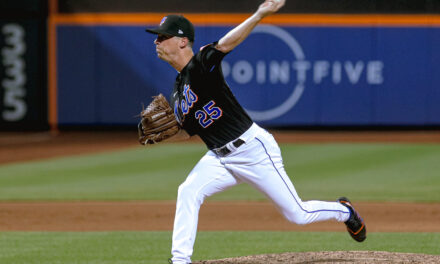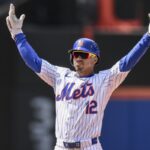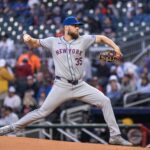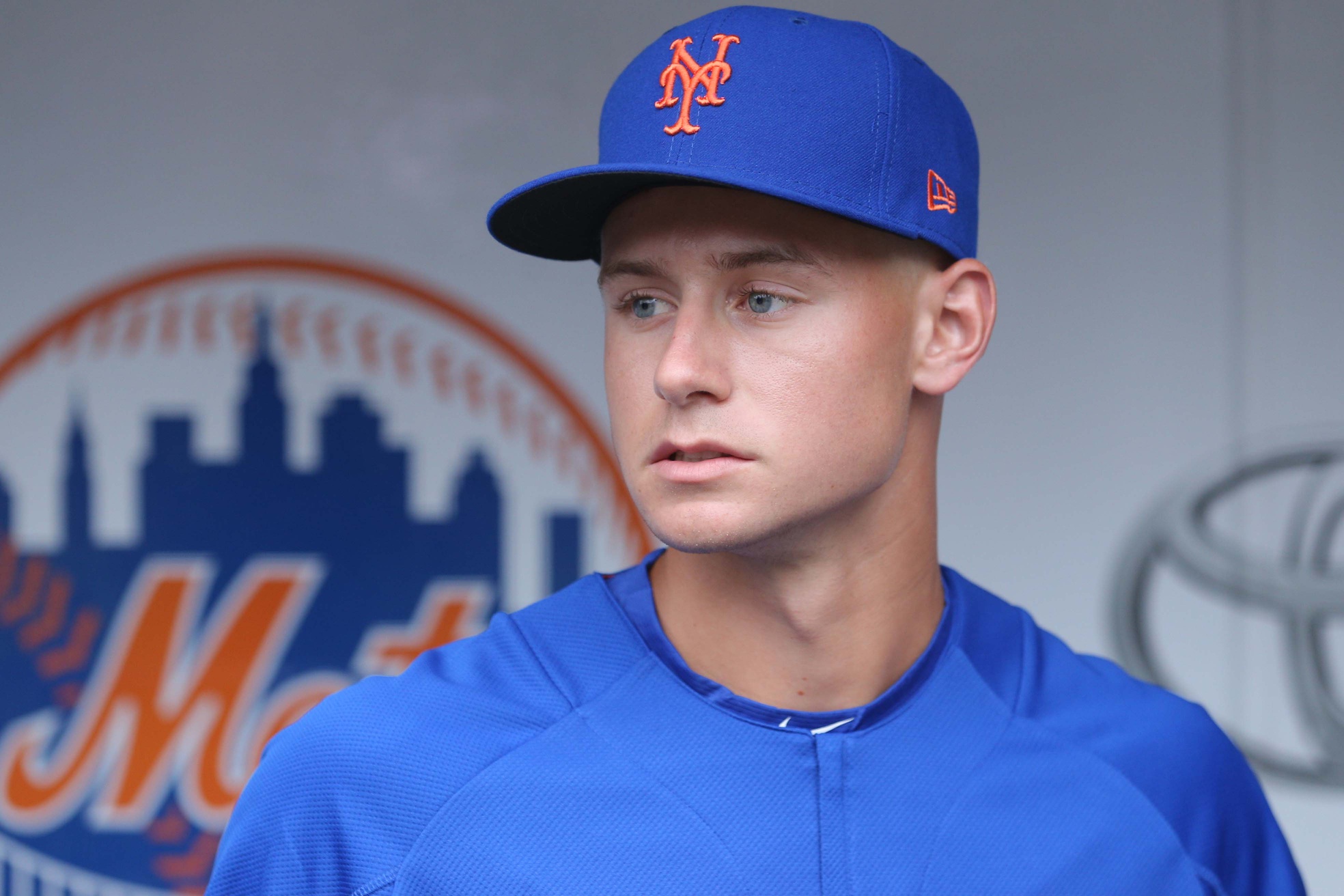
Over the last fifteen years, the New York Mets have had five top-ten picks in the MLB Draft, selecting right-hander Philip Humber third overall in 2004, followed by Mike Pelfrey (9th) in 2005, Matt Harvey (7th) in 2010 and Michael Conforto (10th) in 2014.
Their fifth top-ten selection came in this year’s Draft, where the Mets had the sixth pick. That was the highest they’ve drafted since taking Humber third overall out of Rice University in ’04.
With a bevy of strong talent available in this year’s Draft, the Mets were in the enviable position to add a potential high upside talent to a farm system that was ranked by Baseball America as the 27th best prior to the start of the regular season.
Following the Cincinnati Reds’ selection of third baseman Jonathan India with the fifth overall pick, the Mets were officially on the clock.
When Commissioner Rob Manfred stepped up to the podium at the MLB Network Studios in Secaucus, New Jersey, Jarred Kelenic was some 800 plus miles away in his hometown of Waukesha, Wisconsin, holding his breath.
Surrounded by friends and family at a Draft party inside a large tent in his family’s backyard, Kelenic dropped his head into his hands and cried tears of joy upon hearing his name announced as the Mets choice at number six.
All the hard work, dedication to his craft – including graduating high school a semester early to focus solely on baseball – and countless hours of games and practices had culminated to this moment. Kelenic was the first high school player selected in the ’18 Draft, and became the highest draft pick ever from the state of Wisconsin. The previous record-holder was Kevin Brandt, who in 1979 was drafted 11th overall by the Minnesota Twins. He lasted less than two full seasons in the minor leagues.
Kelenic, 19, is a left-handed hitting outfielder who can impact games not only with his bat but his glove. Some talent evaluators have suggested Kelenic could be a five-tool player, high praise for a young prospect who was considered one of the best pure hitters in the class with a strong feel for the strike zone.
The Wisconsin-native opted not to play high school ball, going the travel route and looking to challenge himself instead. He played for summer teams and two Team USA squads that won gold medals in international play. Kelenic found playing at a young age in such higher competition a boon for his overall development and preparation for eventual professional career.
Less than two weeks after the Mets selected him sixth overall, Kelenic and the team came to terms on an under-slot contract of $4.5 million. He was assigned to the Gulf Coast League Mets for his first professional action. Kelenic got off to a blistering start for the GCL Mets, beginning his career with an 11-game hitting streak in which he posted a 1.156 OPS with five extra-base hits and nine RBIs.
After his twelfth game in the Gulf Coast League, Kelenic was promoted to Kingsport of the Appalachian League for their postseason push.
Despite hitting the ball hard and at times right at fielders, Kelenic was mired in a 10-for-71 (.141) slide in his first 20 games with Kingsport. While he was still drawing walks (16), Kelenic was striking out at a rate he wasn’t comfortable with (21 strikeouts) and was frustrated by the results.
Fortunately, Kelenic discovered a timing issue that was making him late on pitches, and once he corrected the flaw, the rest of the Kingsport season was solid. Over his last 24 games, Kelenic posted a .330/.378/.524 slash, with 12 extra-base hits, 22 RBIs and was five-for-six in stolen base opportunities.
His overall line for the ’18 season was .286/.371/.468, with 10 doubles, six triples, six home runs, 42 RBIs, and 15 stolen bases over 56 games. There were 47 Mets minor leaguers who recorded at least 250 plate appearances for the organization in ’18, and Kelenic finished with the 11th-best OPS (.839) among them.
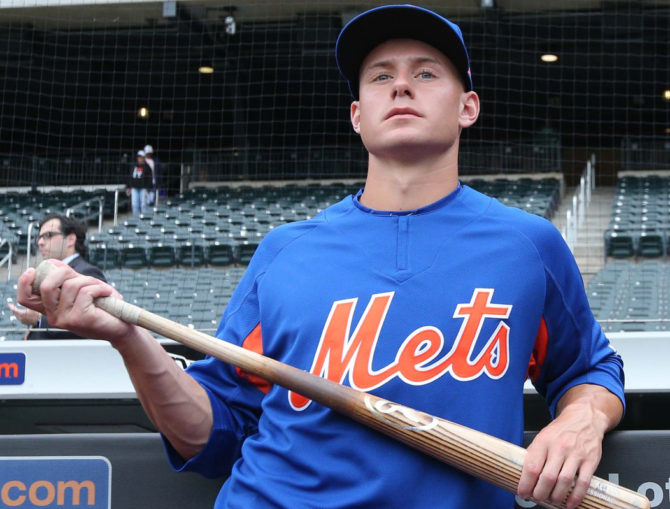
Following his successful first professional season in baseball, Kelenic was invited, along with several of the Mets’ top prospects, to a week-long skills camp held at Citi Field in September. The Mets decided to alter their offseason player development structure, as they had normally held an instructional league in Port St. Lucie. Instead, the skills camp offered the young prospects the chance to get assimilated to the New York lifestyle, including dealing with the media, interacting with the Mets staff, and working one-on-one with Mets coaches.
Kelenic is already listed as the third-best prospect in the Mets’ system by MLB Pipeline, ranked as the 62nd-best prospect in MLB Pipeline’s updated Top 100 MLB Prospects and checked in as the third-best prospect in the Appalachian League by Baseball America. Kelenic earns high praise for his tireless work ethic and mature approach for his age, suggesting to some scouts that he could move quickly through the Mets system.
The talent and promise are all there for Kelenic, as the Mets’ system got a bit more promising with his selection in 2018.
I had the privilege of speaking with Kelenic in mid-October where we discussed his upbringing, the Draft and what he’s looking to improve upon this offseason.
* * * * * * * * *
MMO: Who were some of your favorite players growing up?
Kelenic: Growing up I really enjoyed watching Derek Jeter play. I really enjoyed watching Prince Fielder play. I still to this day enjoy watching Bryce Harper and Mike Trout.
MMO: Who introduced you to the game at an early age?
Kelenic: It was definitely my dad. That was something we played a lot growing up and it kind of just took off.
MMO: I read that your dad is a general contractor, who’s helped build multi-million dollar training facilities in Waukesha. That’s something that you took great advantage of growing up, can you talk a little about those facilities and how you utilized them to hone your craft?
Kelenic: The first one is a huge training facility that has 80 yards of turf and a bunch of squat racks. That’s where I work out with my trainer, who’s J.J. Watt’s trainer, his name is Brad Arnett. It has everything for an athlete of any sport; from squat racks, sandpits, basketball courts, and medicine balls. You name it, it has it.
It really allows me to work to the best of my ability and get my body in the best shape possible before my season starts. It gets me ready to perform at that professional level. Just up the road about a mile, there’s another facility, which is a little bit bigger. It’s got a full turf infield with a little bit of outfield on it with about a sixty-foot ceiling, and that’s where I hit. It’s just like hitting outside. I think there are twelve cages in there and it allows me to get my work in baseball-wise.
Like I said, I go in there and work out and it’s a complete package.
MMO: And obviously you have to take advantage of those types of facilities considering the weather in Wisconsin. What would you say to detractors who say that the weather conditions might impede the growth of players there?
Kelenic: To some degree, it can. But when you have those facilities like this it allows you to play and work on specifically baseball all year long. I feel like I haven’t been cut short. I truly feel like I’ve been playing more baseball than the kids down south and working on it for that matter just because of the facilities and the opportunity that I have.
I would disagree, personally. To some degree, it could, depending on where you live.
MMO: You opted not to play high school baseball and instead played for several travel teams, which included playing twice for Team USA. How did going that route with the travel ball and Team USA help prepare you for your professional career?
Kelenic: It was something that was going to challenge me. Unfortunately, high school baseball wasn’t going to do that. While I wanted to go and play with my friends I wanted to be challenged. Playing that travel circuit was going to give me the biggest opportunity. Colleges were going to see me there and pro scouts were going to see me there. It was just overall the better choice and definitely one of the best choices I’ve ever made.
I definitely think that the travel circuit gets you ready for that college – but more so that pro lifestyle – from traveling from city to city playing. To staying in hotels and being away from home, that was the biggest thing. Being away from your parents and growing up not only as a person but as a player.
MMO: I read in an interview that former 12-year major league veteran Joe Randa was a mentor of yours growing up. What did you work on with him and what was your biggest takeaway while working with him?
Kelenic: A lot of it was just small stuff, but the biggest thing was staying inside the baseball and keeping that inside pitch fair. We still continue to work.
It was the mental side that he really helped me out with because he’s been to the big leagues, he knows what it takes to get there, and he knows how important that mental side is. So he really honed in on that.
MMO: How did the relationship start with Randa? Was there someone in your family that knew him?
Kelenic: My dad played against him in high school.
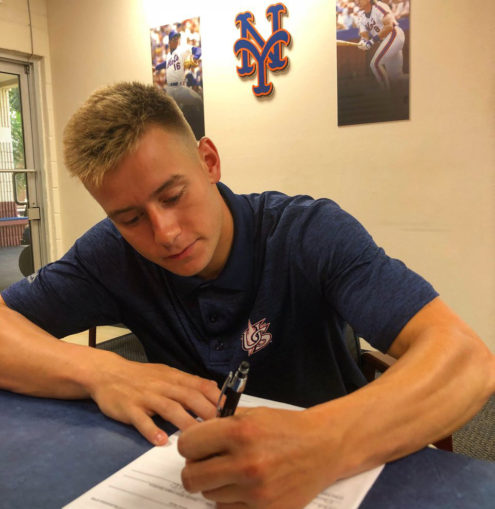
MMO: Heading into the day of the Draft, obviously you had an idea that you were going to be a high selection. Were the Mets the team you always thought were going to select you (6th overall), or were there others who you thought might have selected you either before or after the sixth pick?
Kelenic: No. I heard so many rumors on that day, and I had no idea. I knew the Mets were going to take me before they chose me though. It was about by pick four when I had an idea that they were going to take me.
MMO: What are your overall memories from that day?
Kelenic: It’s a day I’ll never forget. To be able to spend it with family and friends, it was such a great set up. In the video, it probably doesn’t show it too well but we had a huge projector screen with the projector outside on a beautiful, sunny day under a tent. I mean, it was just perfect as you can imagine.
To be selected where I was with like I said, all of my family there is a day I’ll never forget.
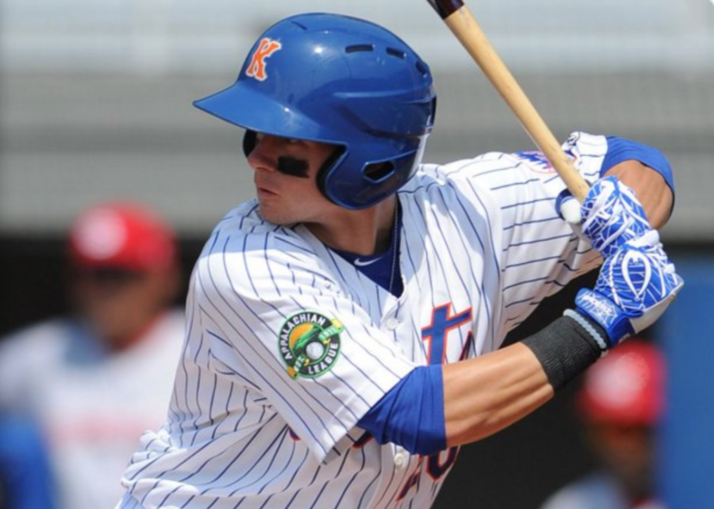
Kingsport Mets
MMO: You started your professional career with an 11-game hitting streak with the Gulf Coast League Mets. How big was that for your confidence to get off to such a hot start like that?
Kelenic: You know, it’s huge. Any time you can get hits in back-to-back games I would say, or, back-to-back at-bats, that’s always a positive.
Going into my first professional season I never set number goals. The biggest thing is I just wanted to have fun and learn as much as possible. And that’s what I was doing. On a day-to-day basis, I was just continuing to learn and really focusing on that next day and you’re only as good as your next hit. I tried to really focus on planning ahead and not goal-setting numbers-wise.
MMO: Were there any initial adjustments you needed to make when starting out in the minors, or anything that kind of took you by surprise?
Kelenic: No, everything that came with it I kind of experienced already. USA Baseball was the best experience of my life, giving me that opportunity to play every day. It gave me that minor league lifestyle. But everything going in I kind of expected, which was good.
MMO: After 12 games with the GCL Mets, you were assigned to Kingsport in the Appalachian League. In your first 20 games with the club, you seemed to hit a bit of a snag: .610 OPS, 21 SO. You turned it around in your final 24 games: 12 XBH, 22 RBIs, .903 OPS.
Did you make any mechanical or physical adjustments to right the ship for the last month of the season?
Kelenic: Personally, I wouldn’t even look at it as a struggle. Right away in that little stint there where my numbers weren’t showing I couldn’t catch a break.
I was hitting the ball hard, but I was hitting the ball right at people. I struck out a little bit but it was beyond frustrating that my numbers weren’t there and I wasn’t getting the results I wanted to. At the same time, I knew I just had to stick with the process and stay with what I was doing.
I also figured out that there was a little timing issue there that was making me mishit balls that I should’ve hit better or instead of fouling off hitting them in the gap. That would help me later and once I kind of figured that out [I] got the timing back and I was hot the whole last half of the season.
MMO: I’m sure you’ve heard the comparisons you share with Brandon Nimmo, with the weather conditions you both grew up with and never playing high school ball. What are your thoughts on the similarities and have you had the chance to speak with Nimmo at all and get any advice from him?
Kelenic: Nimmo’s a great guy. I’ve spoken to him a couple of times briefly; he actually texted me after the Draft offering me congratulations and things like that.
I have heard a lot of comparisons and it’s cool to be compared to any big leaguer. The way he goes about his business and the way he plays the game, I think a lot of guys look up to that, even though he’s a younger guy. But it was cool to kind of have that connection right away.
MMO: Scouts and talent evaluators have described you as a potential five-tool talent. Is being a complete player and working on all aspects of your game something you strive for?
Kelenic: I truly try hard to be that complete player. The one that can throw a guy out at the plate, the one that can steal a bag, the one that can get a hit, the one that can hit it out of the park because the more versatile you can be the better and the longer you’re going to play this game.
All phases of the game to me are important and I work just as hard on each and every category.
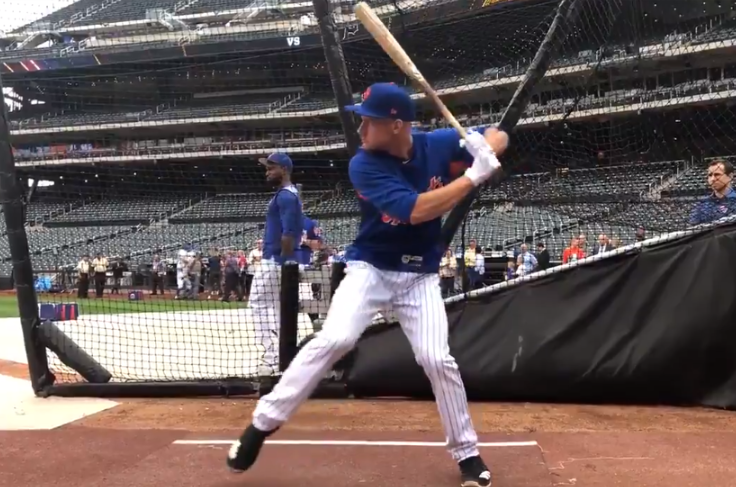
MMO: You attended the Mets’ skills camp in September with several of their other top prospects. What was that experience like for you and what were some of the things you did and covered in your time in New York?
Kelenic: It was fun and it was much needed. To be surrounded by guys that are on the verge of being in the big leagues like Peter Alonso, Justin Dunn and David Peterson. These guys are making their way up and they’ve played a lot of baseball.
This is their second, third, maybe even fourth year in professional baseball and how they approach the game versus how I approach the game having it be my first year was a big surprise for me.
Hanging around Peter Alonso for the whole week, that guy is a big leaguer. He is a big leaguer. The way he handles the game, the way he handles himself off the field, he’s truly a big leaguer. It was fun to work with the coaches one on one and get to really dissect what they think I need to work on, what I think I need to work on, what I think I did well, what I need to do better in. It was a lot of fun.
MMO: While you were in town, did you get to explore Manhattan much?
Kelenic: I did, I did yeah. It was a lot of people. (Laughs)
MMO: What are you looking to improve upon this offseason?
Kelenic: I want to get a little bit more muscle. I kind of have a goal set in, about fifteen pounds probably. But at the same time, I want to keep my speed time and I really want to focus in the offseason on elevating the baseball. Getting it up in the air.
MMO: I really appreciate the time, Jarred. Have a great offseason and Mets fans are looking forward to watching your development.
Kelenic: Appreciate it, brother.
Follow Jarred Kelenic on Twitter, @JKelenic_1019


